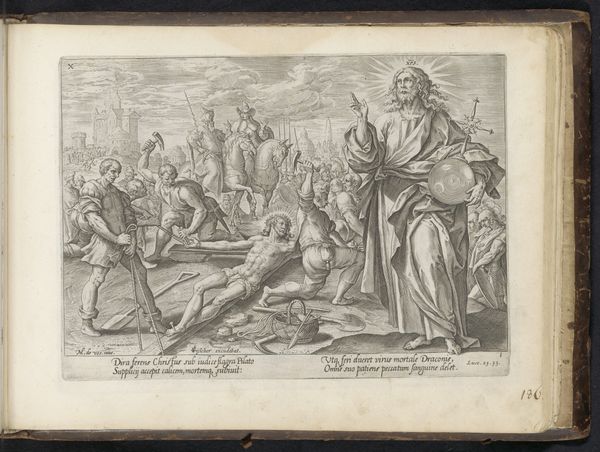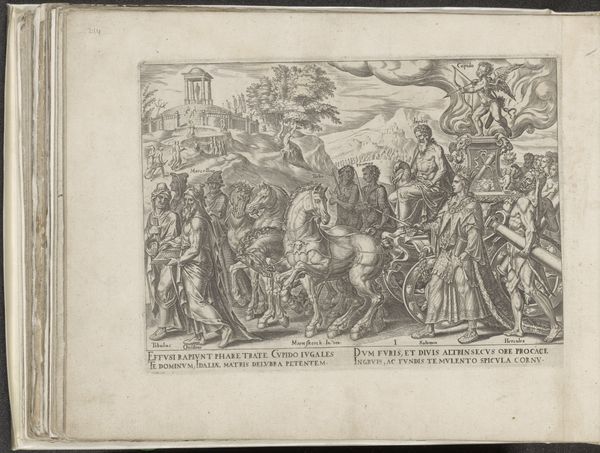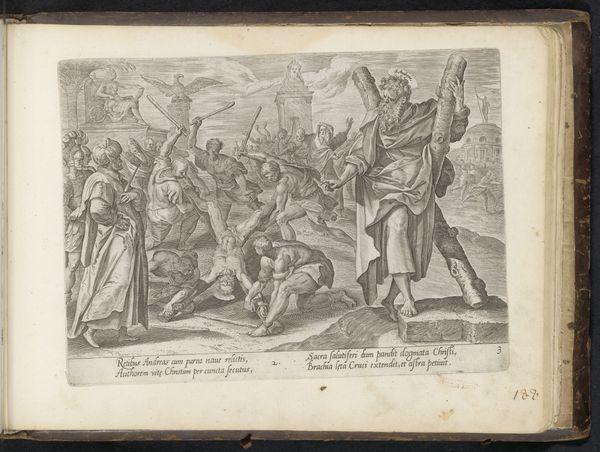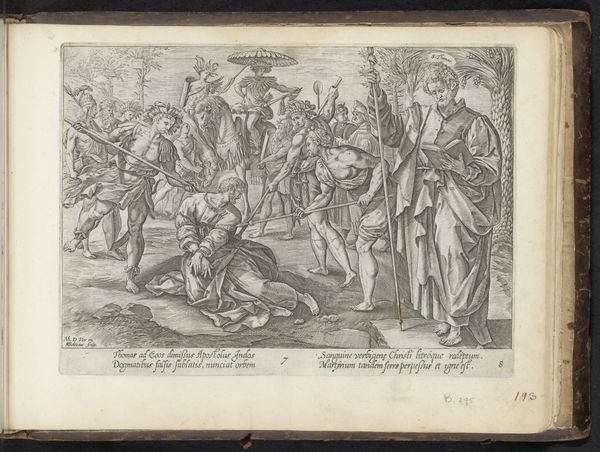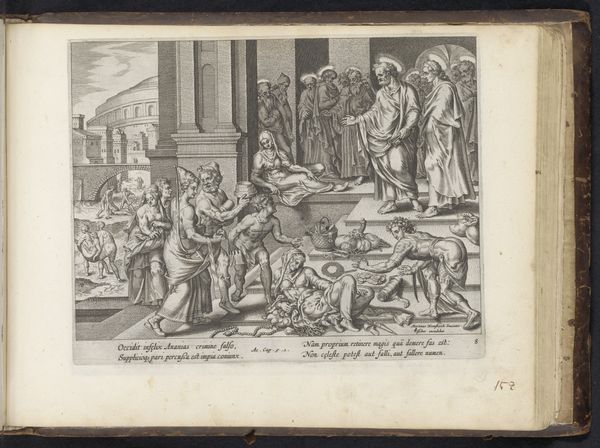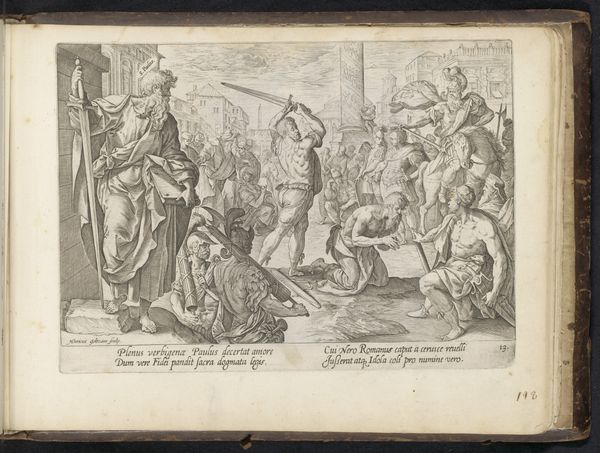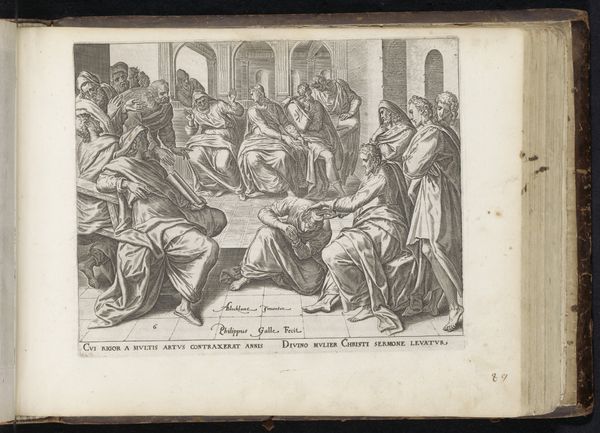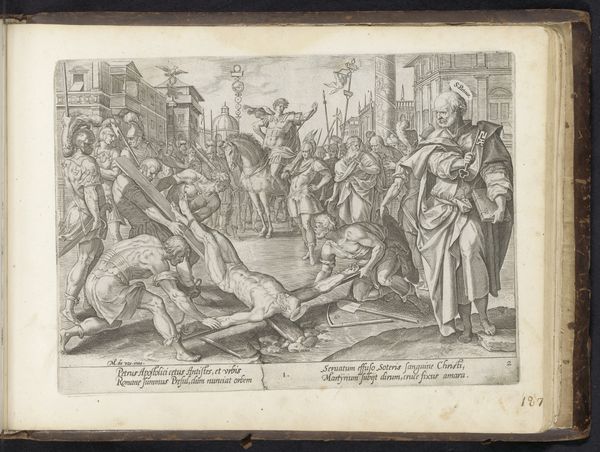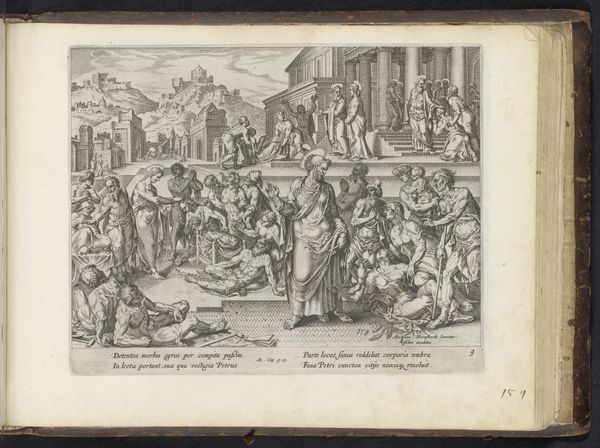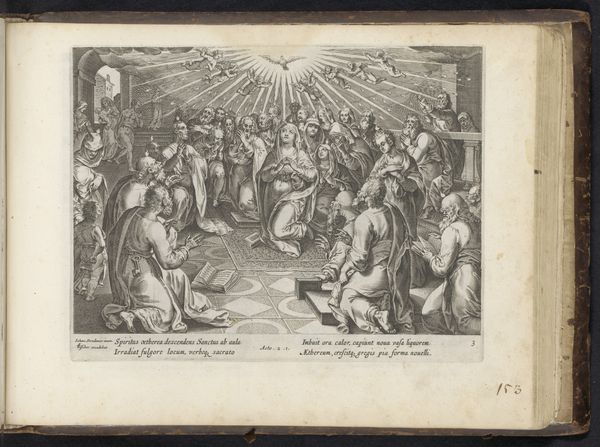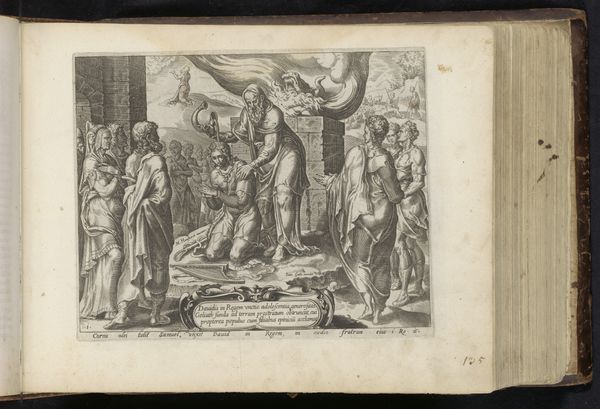
print, engraving
# print
#
pencil sketch
#
mannerism
#
figuration
#
charcoal art
#
coloured pencil
#
watercolour illustration
#
history-painting
#
engraving
#
pencil art
#
watercolor
Dimensions: height 206 mm, width 278 mm
Copyright: Rijks Museum: Open Domain
Editor: This is "Martelaarschap van Johannes," dating from 1576 to 1646, currently held at the Rijksmuseum, and attributed to Anonymous. It's an engraving, and I’m immediately struck by the contrast between the almost clinical rendering of the figures and the brutal scene they depict. What do you see in this piece, especially considering the emphasis on printmaking as a medium? Curator: This engraving compels us to consider the means of production and distribution. Prints like this weren’t just art objects, they were reproducible commodities. The materiality of the engraving, the lines etched into the plate, the ink pressed onto paper – all contribute to a democratization of imagery. How do you think the ability to mass-produce images of martyrdom impacted its reception and function? Editor: I hadn't thought of it that way. So, it's not just about the image itself, but about its accessibility. The multiple copies would make it available to more people. Does that suggest a political or religious intention? Curator: Exactly. The widespread availability collapses the boundaries of elite artistic patronage; this shifts the social context in which we perceive art, since it is disseminated into numerous markets with diverse demands. These weren't precious, unique paintings for the wealthy. Consider also the skill required for engraving, transforming visual artistry into artisanal skill, therefore reshaping our view of labor. Is this “high art” or elevated craft, and does that question change our perception of its value? Editor: That’s fascinating. Thinking about the social context really changes how I see this piece. I used to think of engravings as copies, but now I see them as active agents in the spread of ideas. Curator: And that's the crucial point. By analyzing the means of production, materiality, and social context, we unravel the artwork's complex layers and its profound influence on history. This lens encourages to question ingrained concepts around production, and to perceive what cultural, social, and individual elements might arise in the interaction.
Comments
No comments
Be the first to comment and join the conversation on the ultimate creative platform.
